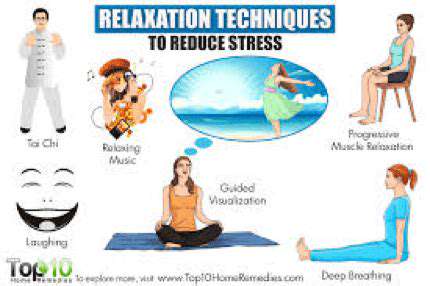Muscle Relaxation Techniques for Anxiety Management
Mindfulness and Body Scan Meditation: Cultivating Awareness
Understanding Mindfulness
When we talk about mindfulness, we're referring to the art of being fully present in each moment, observing our experiences without criticism or immediate reaction. This conscious awareness of thoughts, emotions, and physical sensations forms the bedrock of self-discovery and emotional balance. Through regular practice, individuals often notice significant improvements in managing stress and regulating their emotional responses.
In body scan meditation specifically, this mindful approach creates space to notice bodily sensations with curiosity rather than resistance. Such open observation proves essential for identifying and releasing stored tension throughout the body.
The Role of Body Scan Meditation
This focused meditation technique guides practitioners through a deliberate journey of attention across different body regions. By cultivating this heightened physical awareness, people often discover subtle tensions they hadn't previously noticed, leading to more effective relaxation. The practice builds a tangible sense of being grounded in one's physical experience, which serves as an anchor during stressful situations.
Regular practitioners frequently report an enhanced ability to interpret their body's signals, creating valuable connections between physical sensations and emotional states that inform their overall wellbeing.
Techniques for Body Scan Meditation
The practice typically begins with attention anchored to the breath - noticing its natural rhythm and how it moves through the body. From this foundation, awareness gradually expands to include each body part sequentially, from the toes upward or the head downward. During this process, all sensations - whether comfortable, uncomfortable, or neutral - receive equal, nonjudgmental attention.
The transformative power lies not in changing these sensations, but in changing our relationship to them through consistent, compassionate observation. This shift in perspective often leads to natural release of both physical and psychological tension.
Cultivating Awareness of Body Sensations
Developing sensitivity to bodily signals represents a crucial skill in this practice. Practitioners learn to notice various sensations - perhaps pressure in the lower back, warmth in the hands, or tingling in the feet - without assigning value judgments. This neutral observation creates space between stimulus and reaction, allowing for more conscious responses to physical and emotional experiences.
Over time, this awareness frequently reveals meaningful connections between physical tension patterns and emotional states, providing insights for holistic self-care.
Benefits of Regular Practice
Sustained engagement with these practices yields benefits that extend far beyond temporary relaxation. Many practitioners experience lasting improvements in emotional resilience, stress management, and overall self-awareness. The cultivation of present-moment attention often translates into daily life as increased patience, focus, and appreciation for ordinary moments.
For those managing chronic pain or stress-related conditions, the enhanced mind-body connection developed through these practices can offer significant relief and improved coping strategies, often reducing reliance on medication or other interventions.
Mindfulness and Muscle Relaxation
The synergy between mindfulness and relaxation techniques creates a powerful tool for stress management. By combining present-moment awareness with targeted muscle release, practitioners can interrupt the tension-stress cycle more effectively. This integrated approach often leads to deeper, more sustainable relaxation than either method alone.
Like any skill worth developing, the full benefits emerge through consistent practice over time, with many practitioners noticing cumulative improvements in both physical comfort and emotional wellbeing.
Applying Relaxation Techniques in Daily Life: Practical Tips

Benefits of Relaxation Techniques
Integrating relaxation practices into daily routines can profoundly impact quality of life. These methods serve as effective antidotes to modern stress, creating islands of calm in demanding schedules. Regular practitioners often report better sleep, sharper focus, and increased capacity to handle challenges with composure. Beyond immediate effects, these practices build psychological resilience - the ability to bounce back from difficulties with greater ease.
The physical benefits are equally compelling, with many people experiencing reduction in stress-related symptoms like muscle tension, headaches, and digestive issues. This mind-body approach frequently leads to healthier lifestyle choices overall, as increased self-awareness makes unhealthy patterns more noticeable and easier to change.
Effective Relaxation Techniques
The variety of available techniques ensures everyone can find approaches that resonate with their preferences and lifestyle. Breath-focused methods offer immediate accessibility - simple yet powerful tools available anytime, anywhere. Visualization techniques leverage the mind's capacity to evoke relaxation responses through imagined peaceful scenarios.
Movement-based practices like yoga or tai chi combine physical benefits with mental calm, while progressive muscle relaxation systematically addresses physical tension patterns. Mindfulness meditation cultivates a observing stance toward all experience, creating space between stimulus and reaction. The common thread across all methods is the intentional cultivation of present-moment awareness and relaxation response, counteracting the stress responses that dominate modern life.
Experimenting with different techniques often yields the best results, as individual responses vary. Many find that combining several methods creates a more comprehensive approach to stress management and wellbeing.